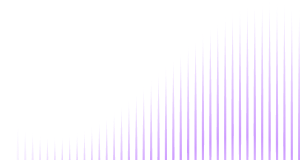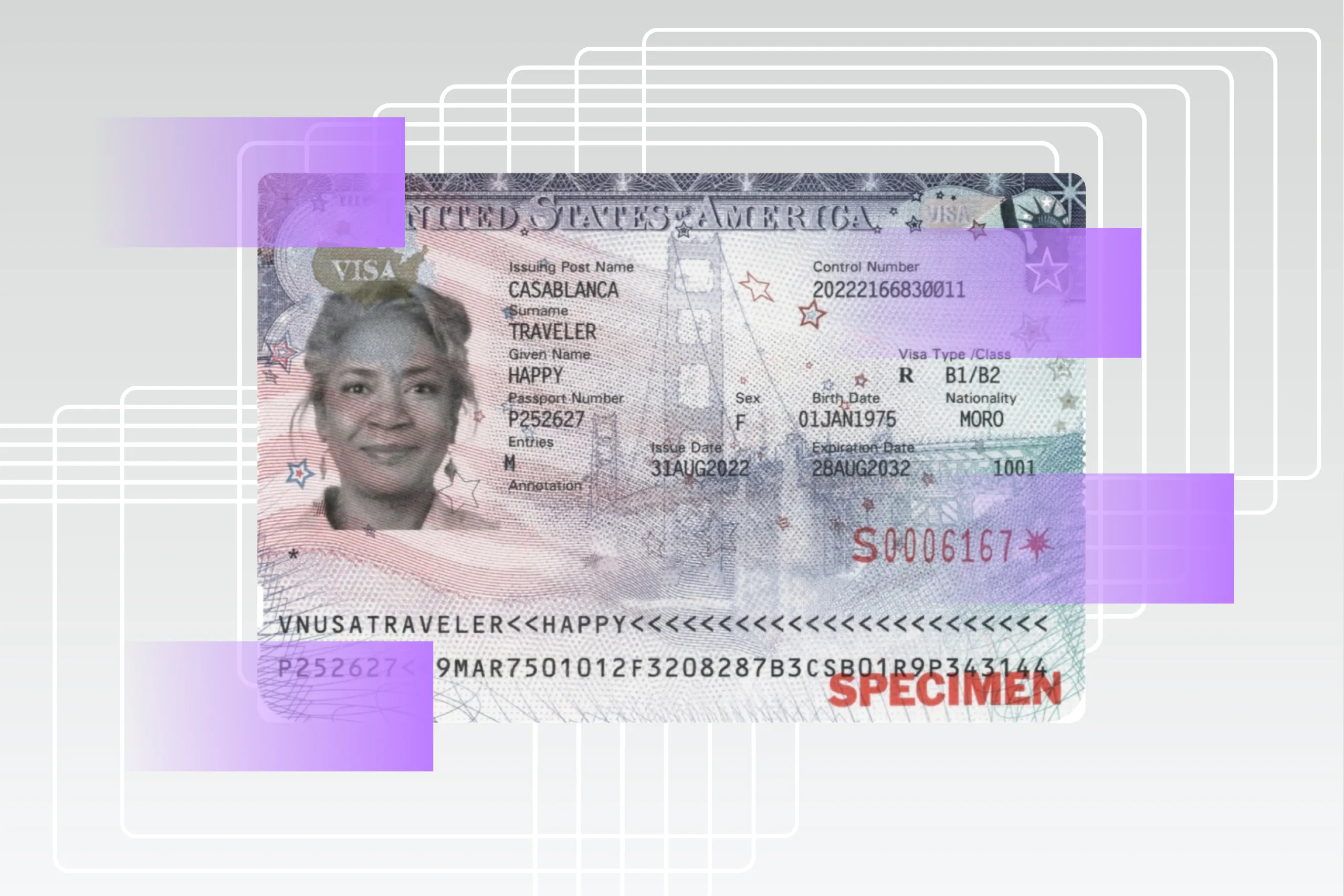In 2024, European countries received over 11.7 million short-term visa applications—a 13.6% jump from the previous year and a 56% increase compared to 2022, according to the European Commission. The largest volumes came from China (1,779,255 applications), Türkiye (1,173,917), and India (1,108,239).
With rising demand, third-party visa agents and appointment brokers are booming. Some operate ethically, but many exploit the system, snatching up appointment slots using bots or reselling them at high prices. This abuse creates delays, confusion, and a poor experience for both legitimate applicants and government agencies.

A search for “EU visa help” yields over 100 million results—many from unofficial or commercial visa agencies.
Identity verification (IDV) technologies offer a way forward. By validating applicants directly and securely, they help eliminate intermediaries, reduce fraud, and speed up the process for everyone involved.
This article shows how.
Get posts like this in your inbox with the bi-weekly Regula Blog Digest!
How EU visa application systems work—and where they fall short
Most Schengen countries follow similar visa procedures. Typically, the process includes:
Registering on the official visa platform.
Filling in the application and gathering supporting documents.
Booking an appointment at a consulate or visa center.
Submitting biometrics, a passport, and the required documents.
Attending an in-person interview.
Waiting for the decision.
While the exact steps and their order may vary by country or visa type, most stages—except for biometric submission and interviews—are completed online.
For example, in Denmark, applicants must use two separate platforms:
- ApplyVisa to register, fill out the application, and pay the visa fee.
- VFS Global to schedule a document and biometric submission appointment at a visa center.

Applicants submit their details and print a cover letter via Denmark’s ApplyVisa system before visiting a local visa center.
In Germany, the process also involves two platforms:
- Videx, a government portal for filling out the application (available without registering).
- VFS Global, used for booking appointments at a visa center.

German applicants must use Videx to enter their data before scheduling an appointment through VFS Global.
Who is VFS Global?
VFS Global is a major outsourcing service provider that supports governments in handling visa and consular tasks. It operates a worldwide network of centers where applicants submit documents and biometrics, which are then sent to the relevant authority. Most EU countries rely on VFS Global to manage appointment scheduling.
Some applicants must use other official intermediaries. For example, Lebanese citizens applying for French visas must complete their form on the official France-Visas website and book their appointment via TLScontact.

CAPTCHA tools on official platforms like France-Visas and TLScontact help prevent bot-based abuses.
This dual-platform approach adds a layer of security, ensuring applicant information matches across systems. However, it also creates friction. Users must register on multiple platforms (sometimes including government authorization systems) and manually re-enter the same data, leading to errors, delays, and a poor user experience. Technical issues are common due to system overload from millions of users worldwide.

VFS Global occasionally posts updates on service outages due to technical issues.
Also, these platforms use outdated methods for user identification and access control. Most rely on email or SMS verification and passwords. They also operate across disconnected databases, processing data from both the visa form and the appointment booking system. This fragmentation slows down application processing and creates more room for error.
Faced with delays and inefficiencies, many applicants turn to facilitators who promise to “simplify” the process. These intermediaries are quickly becoming a powerful force in the visa application ecosystem.
Who visa brokers are—and how they exploit the system
As third-party facilitators, visa brokers claim to make visa applications easier. They assist with understanding requirements, gathering documents, and preparing for interviews. In doing so, they become another layer between the applicant and the consulate or visa center.
Some of these businesses solely focus on securing appointments—a process so competitive in some regions that it opens the door to manipulation.

Visa brokers often run targeted Google Ads, using keywords like “get Schengen visa appointment” to attract desperate applicants.
To meet demand and maximize profits, some brokers break the rules. Common tactics include:
Using bots to bypass CAPTCHAs and automatically snatch up appointment slots.
Submitting false identities to gain unfair access to systems.
Registering multiple times with the same or similar data.
These actions clog up appointment systems and push legitimate applicants out. As a result, individuals who follow the procedure honestly may find no available slots for months.
This behavior undermines trust in visa management systems. Public frustration is increasing online. For example, Reddit threads dedicated to Schengen visas are filled with stories of people waiting endlessly or being forced to pay third-party agents just to book a slot.

Reddit users often share both helpful tips and emotional stories of dealing with VFS Global’s appointment system.
The problem doesn’t end there. Fraudulent appointments add workload on consular staff who must vet each entry manually. When a fake applicant shows up and fails in-person ID checks, this creates more delays and complicates the queue for everyone.
To counter these abuses, visa systems implement basic defenses, such as blocking IP addresses with too many requests and running CAPTCHA tests during registration. Embassies also publish notices about appointment scams and unauthorized brokers on their websites.

Official sites, like France-Visas, post alerts to caution users against fraud and abusive agents.
But these measures don’t fix the core problem: they don’t reliably confirm who the applicant is. Without stronger identity verification, the door remains open to fraud—and to a shadow industry profiting from system flaws.
The hidden threat to applicants' personal data
Unlike official visa management systems, visa agents often lack personal data protection policies. This means the sensitive information and ID documents that applicants share with them can end up exposed on darknet forums, sold, or misused in other ways.
How IDV can strengthen the visa application process
Digital IDV systems offer critical value at multiple stages of the visa journey, making it faster, more secure, and less prone to abuse.
Before the appointment
Adapting best practices from regulated sectors like Banking or Telecom, visa authorities can use IDV to verify applicants upfront, before they reach the appointment stage. An IDV flow tailored to visa management systems may include the following steps:
- Document authentication: Applicants scan their passport or other government-issued photo ID using their mobile phone. The system runs a set of automated authenticity checks, including reading and validating data in the visual inspection zone (e.g., name, date of birth, expiration date), machine-readable zone (MRZ), and barcodes. Electronic documents can be verified through NFC technology, where RFID chip data is checked. Additionally, IDV software can analyze dynamic security features in the document—such as holograms, Optically Variable Ink (OVI) elements, and Multi-Laser Images (MLIs)—to ensure that a physical ID is presented, not a screen display, printed copy, or AI-generated spoof. This helps confirm the passport’s validity and detect any signs of tampering or fraud.

In most cases, to start the document authentication process, the user needs to hold the ID's data page in front of their mobile camera. Source: ESTA.
Biometric verification with liveness detection: Applicants take a selfie, which is compared to the ID photo. Liveness detection blocks presentation attacks using printed photos, deepfakes, or on-screen images. This process can be passive—requiring only a photo—or active, where users must perform a random set of actions, such as smiling or nodding. The active option is currently considered most effective, especially for detecting AI-generated photos and videos.
Data entry automation: IDV systems can automatically extract and input personal data—like name, nationality, or ID number—directly from the scanned document to the application, minimizing manual errors and saving time.
Biometric collection: An applicant’s photo and fingerprints are often required for visa applications. Since a standard IDV process includes selfie submission, these biometrics can also be automatically collected for further processing. For example, Regula Face SDK includes predefined photo profiles aligned with the standards and requirements of the Schengen Visa, ICAO, and the US. Also, custom profiles allow you to set specific enrollment photo requirements based on your needs, using 45 image quality parameters like head size and position, pose and expression, face occlusion, and the presence of inappropriate objects.
In addition to these checks, digital visa management systems may also include some extra features. To block unauthorized third parties, the system can require a selfie match during appointment scheduling, cross-referencing it with the previously captured image or document photo.
For added security, live interviews can also be used to verify identity in real time. However, this method is time-consuming and harder to scale.
During the appointment
Once an applicant arrives at the visa center or consulate, they present their documents and submit biometrics in person. This step usually involves manual ID checks by officers, who compare the applicant’s physical appearance with their passport photo and confirm the name against appointment lists.
But this process can—and should—be enhanced.
While visa centers don’t operate like border control, it’s possible to bring more advanced IDV practices to them, improving both security and processing speed. On-site document readers like the Regula 70X7, or embedded tools for self-service kiosks like the Regula 70X8M, can quickly validate documents and automate data entry, reducing human error. ID databases such as the Regula Information Reference System (IRS), which contain images and detailed descriptions of global documents and their security features at multiple protection levels, help staff inspect suspicious IDs with greater confidence.
Rethinking the visa application system with IDV
There are two approaches government agencies can take in their visa management systems:
Applicant pre-verificationbefore an appointment at a visa center, using IDV automation. This includes online document and biometric checks, followed by on-site identity verification.
Fully online applicant verification, where all checks are done digitally. This method works best for e-visas, which are already issued by many countries. For security reasons, it should require biometric passports, as they are more secure forms of ID. Containing embedded chips that store encrypted personal data and biometric information, e-documents are far more resistant to tampering and fraud.
Implementing an IDV component into the visa application process weeds out unverified visa agents from this chain. If applicants must submit their identity documents and biometrics during registration, brokers can no longer book appointments on someone else’s behalf.
Automation also reduces errors in applications. When data is captured directly from a government-issued ID and validated instantly, the number of manual corrections—and rejections—drops significantly. This not only eases the burden on consular staff but also improves the applicant experience.
With decades of expertise in IDV, along with successful projects supporting global visa waivers, Regula empowers this new model with best-in-class tools:
Regula Document Reader SDK authenticates ID documents in seconds by checking visual security features, MRZ, barcodes, and RFID chip data. It supports over 16,000 documents worldwide from 254 countries and territories, ensuring global coverage.
Regula Face SDK confirms the applicant is the legitimate document holder using face matching and advanced liveness checks. It detects deepfakes, video injections, screen replays, and other spoofing attempts to keep the process secure.
Together, these tools help governments create a more reliable, efficient, and fraud-resistant visa management system.
Book a call to explore how Regula can support your digital visa workflows.





